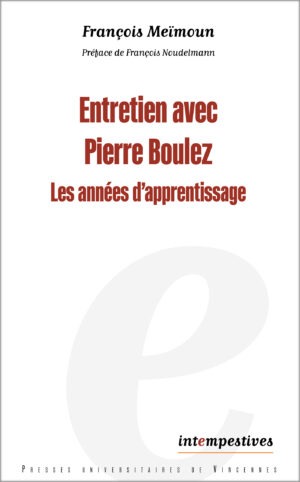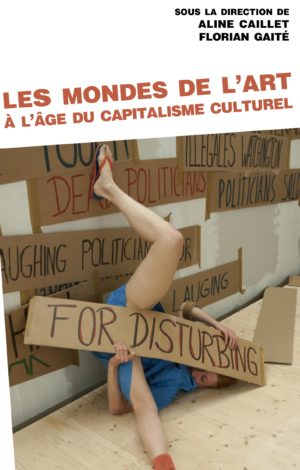Sophie Schvalberg : « The Artist’s Account Versus the Scholar’s Speech: Three Controversies about Legitimacy (18th and 20th Century) »
This paper deals with three remarkable controversies opposing distinguished artists and art critics or theoricians, and preparing modern times: the ones confronting Falconet and Diderot (1765-1766), Giraud and Éméric-David (1805), Whistler and Ruskin (1878). By comparing series of litterary or judicial documents that were involved, one is struck by some repetitive themes in the artists’ claims: denunciation of ancient authors, parallel between artistic appraisal and scientific knowledge, defence of the sole legitimacy of comments based on practical experience.
Giovanni Parenzan : « A Captious Speech. The Experience of Sculpture and Critics’ Arguments in 1960’s Art »
Paradoxically, in spite of its virulence, the polemics between modernism and minimalism took place within the same field, the field of phenomenology: indeed, Merleau-Ponty’s writings decisively influenced Robert Morris and Rosalind Krauss as well as Michael Fried. This essay will try to deconstruct the divergence between the protagonists of this querelle in order to show that their phenomenological interpretations are but different articulations of the same compromise between modernist formalism and minimalist corporality. It will then be possible to say that a tension between bodily gesture and abstract syntax, “perception” of weight and “knowledge” of form, structured the expanded field of ’60 sculpture and that only the discourse of phenomenology, in its “contradictory” (Fried) ambition to join body and syntax, was able to capture it
Laurence Corbel : « Language Games in the Art of the Sixties: The Paradoxes of Description »
Amongst the texts artists have written since the sixties, they are numerous descriptions: meant for art’s reception, they are underlay by reflection artists have about relation between art and language and about language’s power and limits. They raise also theoretical and epistemological problems and outline a new discourse pragmatic.
Pauline Chevalier : « Script and Performance in American Art of the End of the Sixties and Seventies »
Whereas some artists at the end of the Sixties, like Vito Acconci, focused their practice on the relationship between word and gesture, between text and performance, others played on the script and the narrative as marginal and yet fundamental sites for experimentation, in the renewal of the score and writing, as representations of movement. The page, verb, grammar and syntax, sometimes distorted, sometimes jostled or remodeled through literary or musical influences are common features of radical experiences from many artists, dancers and performers who had then a major influence over critical discourse and vocabulary, as one can observe in a magazine such as Avalanche.
Ophélie Naessens : « The Word as a Gift: An Example of the Use of Verbal Language in Fine Arts »
This article is about the works of contemporary video makers in which the artist allows another to express himself or herself, films this expression then gives a representation of it. We will examine what is happening in this creation, from the transfer of a supposedly authentic expression to the construction of a representation. The analysis of these practices will lead us to ask ourselves about the way in which the artwork questions the modalities of the restitution of a “given word”, challenging the conception of a direct transmission.
Claire Fagnart : « Critical Discourse and Art Conceptions »
This article aims to clarify the links between different categories of critical commentaries and conceptions of art, or between forms of critical language and artistic ideology. This undertaking is based on the idea that the ways of conceiving and constructing commentaries on works of art are predetermined by the writers’ more or less conscious conceptions of art. It is thus necessary to establish a typology of critical language: critical commentary is classified here into two groups and four sub-groups: restricted commentaries (endogenous and exogenous) and expanded commentaries (historically-contextualized and pragmatically-contextualized).
Yaël Kreplak : « Ways of Talking: the Anecdote as a Way of Approaching the Artwork »
Drawing on interactional linguistics and pragmatist aesthetics, and using video data, we’ll define anecdote as a social practice, through which emerges a contextual version of an artwork responding to the interactional needs of the situation. These linguistic considerations will allow us to introduce the theoretical context of an ongoing exhibition project, devoted to these ordinary stories, and specifically addressing the issue of their collection, exhibition and circulation.




